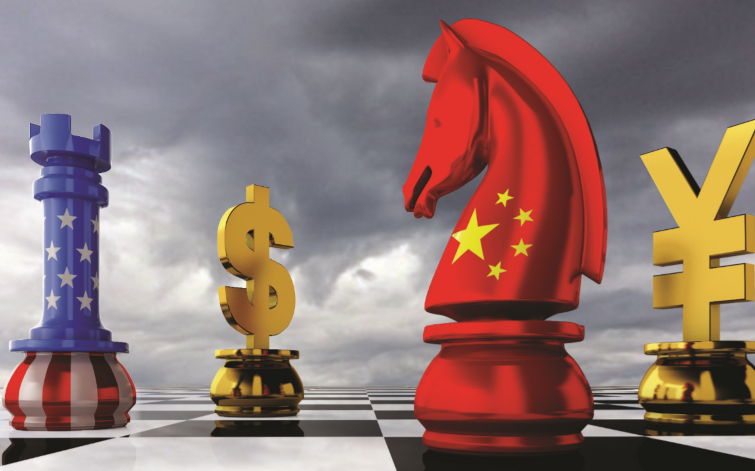Era for Reconstruction of Globalization Is Here
- Caifu Magazine | by Ann He
- EN


The current trade war between China and the United States is reshaping the global trade pattern and value chain. Economic globalization is entering a new stage of development. Since the outbreak of the trade war over a year ago, both China and the United States have been deeply affected.Chinese goods under increased tariffs exported to the United States fell by 14 percent and trade volume decreased by $18 billion, accounting for 3 percent of total Chinese annual exports to the United States. American exports to China shrank by 38 percent and trade volume decreased by $23 billion, or 15 percent of U.S. exports to China.
The current trade war between China and the United States is reshaping the global trade pattern and value chain. Economic globalization is entering a new stage of development. Since the outbreak of the trade war over a year ago, both China and the United States have been deeply affected. Chinese goods under increased tariffs exported to the United States fell by 14 percent and trade volume decreased by $18 billion, accounting for 3 percent of total Chinese annual exports to the United States. American exports to China shrank by 38 percent and trade volume decreased by $23 billion, or 15 percent of U.S. exports to China.
How does a trade war affect the global value chain and industrial division of labor? There are two important mechanisms: one, both China and the United States may try to avoid the impact of tariff increases on costs through industrial transfers; two, they may also reduce incremental risks by directly downsizing bilateral trade. The former may lead to the transfer of some Chinese industries to other countries while the latter may result in global trade and economic contraction. In the long run, the trade war will not only change the global trade pattern and industrial division of labor quantitatively and structurally but also further intensify global competition in the value chain.
At present, a new round of global manufacturing transfers has started and may well continue for several years. Data from China and the United States offer ample evidence. For China, the decline in exports to the United States in the first half of this year was mainly offset by export increases to the EU, ASEAN, Mexico and the Taiwan region. For the United States, the decline in imports from China was mainly replaced by increased imports from the EU, Mexico, Vietnam, Republic of Korea and the Taiwan region. Some of the changes came from entrepot trade but a large proportion was structural due to industrial relocations.
Official data from Vietnam show that, among the 51 countries and regions with increased direct investments in the country, China ranks first with a share of 24.6 percent. China has also become Malaysia's largest source of foreign investment in manufacturing for three consecutive years. According to data from the Malaysian Investment Development Authority, Chinese investment in Malaysian manufacturing from 2016 to 2018 was MYR 4.7 billion, 3.9 billion and 19.7 billion respectively, accounting for 17.2, 18.1 and 34 percent of foreign direct investment approved in the relevant year.Southeast Asia is becoming a key destination for the transfer of labor-intensive industries. At the same time, Chinese industries are also experiencing strategic adjustments for the long term, especially with increased investments in high-tech and R&D. In 2018, import and export of high-tech products accounted for 30.7 percent of total foreign trade volume. In the first five months of this year, while private investment in Guangdong's manufacturing industry fell 10 percent year-on-year and traditional manufacturing industries faced declines ranging from 9 to 40 percent, investment in high-tech industries rose 1.8 percent, demonstrating a trend in the restructuring and upgrading of industrial sectors.
It is predicted that regardless of whether China-U.S. trade friction continues or not, the trend of reconfiguration of the global manufacturing industrial chain and reconstruction of industries across different regions will be irreversible. Such change is profoundly impacting the trade and industrial division of labor among countries in at least two overarching ways.
First, the trade intensity of the global value chain has decreased. In recent years, although the absolute value of cross-border trade is still growing, its share in global commodity output is declining. McKinsey reports that between 2007 and 2017 the share of merchandise goods in total global value chain output fell from 28.1 percent to 22.5 percent. In the most complex value chain with the strongest trade attribute, the decline of trade intensity is especially obvious.
Second, the three global value chains have demonstrated increased regional instead of global attributes. Since 2018, super-large free trade agreements such as CPTPP, EPA, USMCA and one between the EU and the Southern Common Market have been signed, with increasingly prominent regional attributes. According to the World Trade Organization, as of June 2019 the total number of effective regional trade agreements (RTAs) reported to the global body had reached 474. These ultra-large RTAs have the following characteristics:
- A. Existence of an apparent central country. Although there are great differences in content, RTAs signed by the central member with other members have strong similarities in certain provisions, hence different models of central member dominance.
- B. RTAs have become important policy tools in foreign economic and political relations. Some RTAs are designed not only to increase trade volumes among members through discriminatory treatments but also to satisfy political desire for competition to establish an upper hand in making international economic and trade rules.
- C. Exclusivity and the principle of origin. The US-Canada-Mexico Trade Agreement further strengthens regionalization in North America, with obvious exclusivity.
Today's world is witnessing trade disputes not only between China and the United States but also between Japan and the Republic of Korea. Such disputes epitomize the globalization process. In the name of national security, more and more countries use trade sanctions and customs duties as regular tools. Globalization is moving from integration to fragmentation, in which players strive to divide the existing cake instead of making the cake bigger. Consequently, competition becomes more intense and friction more frequent, seriously testing the resilience of various economies. A more open market is bound to become a scarce resource in the world.















